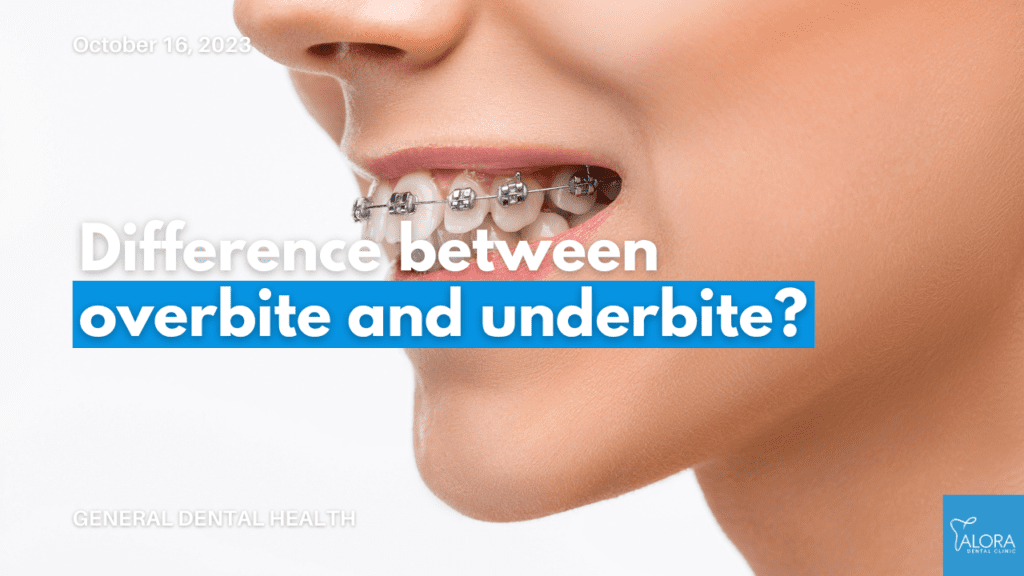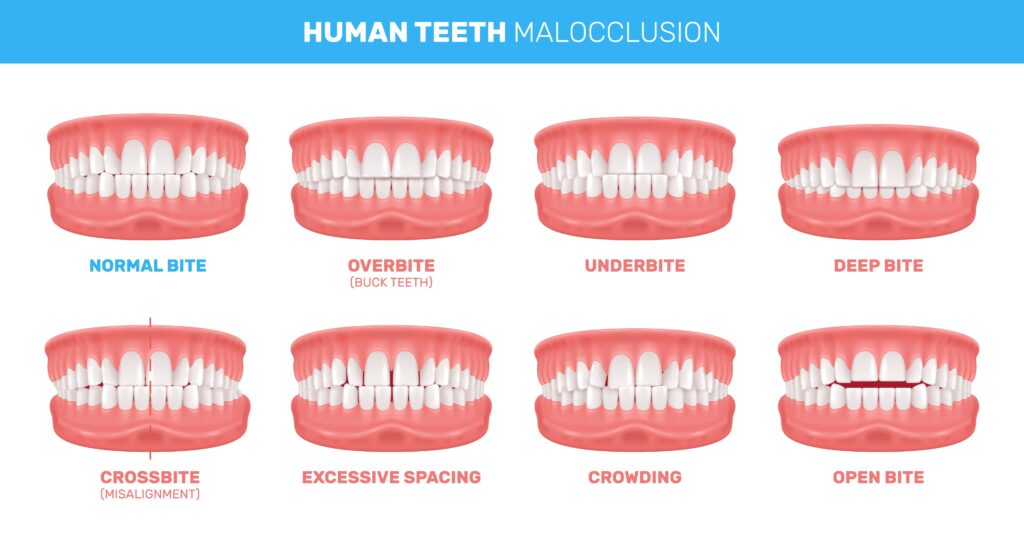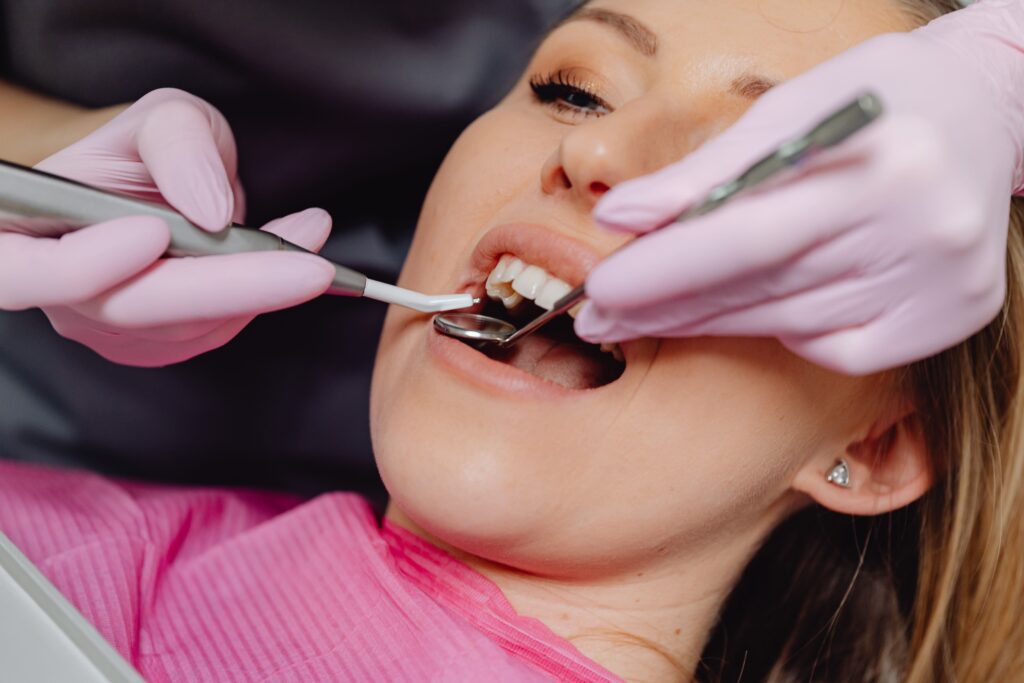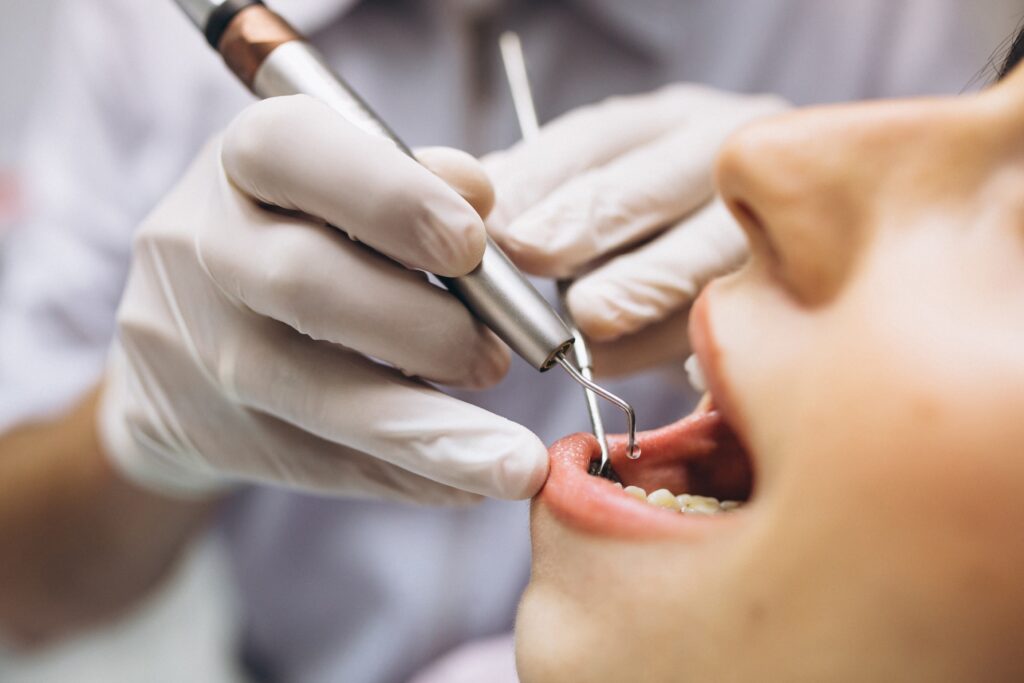Overbite vs. Underbite: Causes, Differences, and Solutions

When it comes to dental health and appearance, the alignment of our teeth plays a pivotal role. Among the various types of malocclusions, two stand out in particular: overbites and underbites. Though they may sound similar, they have distinct differences, causes, and treatment solutions.
What's the Difference?
Overbite (Buck Teeth): This occurs when the upper teeth protrude significantly over the lower teeth. It’s like the upper jaw has taken a step forward.
Underbite: The opposite of an overbite. Here, the lower teeth are too far forward, making them more prominent than the upper teeth.
Diving into the Causes
Understanding the root of a problem is the first step toward addressing it. Let’s uncover the reasons behind these dental misalignments.
Overbite Causes
Genetics: Just as you inherit eye color or hair type, dental structure can be passed down too.
Habits: Childhood habits like thumb-sucking or prolonged use of a pacifier can lead to an overbite.
Bone Structure: Sometimes, the issue lies in the jawbone itself.
Underbite Causes
Genetics: Once again, family traits play a role.
Growth Problems: Uneven growth of the upper or lower jaw can lead to an underbite.
Injuries: Trauma to the jaw or face can sometimes cause this misalignment.
The Importance of Treatment
Left unaddressed, overbites and underbites can lead to:
- Difficulty in chewing and speaking.
- Increased risk of tooth decay and gum disease.
- Facial appearance concerns.
It’s not just about aesthetics; it’s about overall dental health and function.
Key Differences
Appearance: Overbites give the face a more protruded upper lip, whereas underbites give the chin a more pronounced appearance.
Tooth Wear: Underbites can cause faster wear on the upper teeth, while overbites can lead to quicker wear on the lower teeth.
Speech: Both malocclusions can lead to speech challenges, but they might affect different sounds.
Chewing: Overbites can make it challenging to bite into certain foods, whereas underbites can make chewing difficult.
Treatment Options
Both overbites and underbites can be addressed with a combination of orthodontic and surgical treatments:
Braces or Clear Aligners: These are often the first line of treatment for mild to moderate cases.
Retainers: After braces, retainers help maintain the new position of the teeth.
Jaw Surgery: In severe cases, corrective jaw surgery might be necessary.
Palatal Expanders: Widens the upper jaw to better fit with the lower jaw.
FAQs:
If left untreated, these malocclusions can lead to speech issues, difficulty in chewing, increased wear on the enamel, and even TMJ disorders.
It’s recommended that children have their first orthodontic evaluation by the age of 7. Early detection can lead to simpler and more effective treatments.
Not always. While surgery is a solution for severe cases, many mild to moderate malocclusions can be corrected using braces, aligners, or other orthodontic appliances.
Treatment duration varies based on the severity of the malocclusion and the method used. On average, braces are worn for 18-24 months, but each case is unique.
Yes, retainers help maintain the new position of teeth after orthodontic treatment and prevent them from shifting back to their original positions.
Many dental insurance plans cover a portion of orthodontic treatments. It’s essential to check with your insurance provider for specifics on coverage.
Final Thoughts

Taking the time to understand dental malocclusions, whether it’s an overbite or an underbite, is crucial for your oral health. Remember, it’s more than just an aesthetic concern; the alignment of your teeth impacts your overall oral well-being.
At Alora Dental Clinic, we believe in empowering our community with knowledge to make informed decisions about their dental care. If you or a loved one have concerns about teeth alignment or any other dental issues, don’t hesitate to reach out to our dedicated team. Let’s work together to keep those smiles bright and healthy!
Meet Your Dentist...
Step into Alora Dental Clinic and let us introduce you to our passionate and dedicated dentist, Dr. Angelica Eden Astillero. She’s the type of person who lights up a room with her warm and approachable demeanor. And that’s just the start of what makes her an exceptional dentist.
Dr. Astillero graduated from the University of the East, where she developed a love for dentistry and helping others. Her commitment to continuing education and the latest dental techniques allows her to provide top-notch care to patients of all ages. But what truly sets her apart is her ability to connect with her patients and put them at ease.

Get in touch!
Where to find us?
53 Narra St, Project 3, Quezon City, 1102 Metro Manila
Call us at:
0955-827-6875



